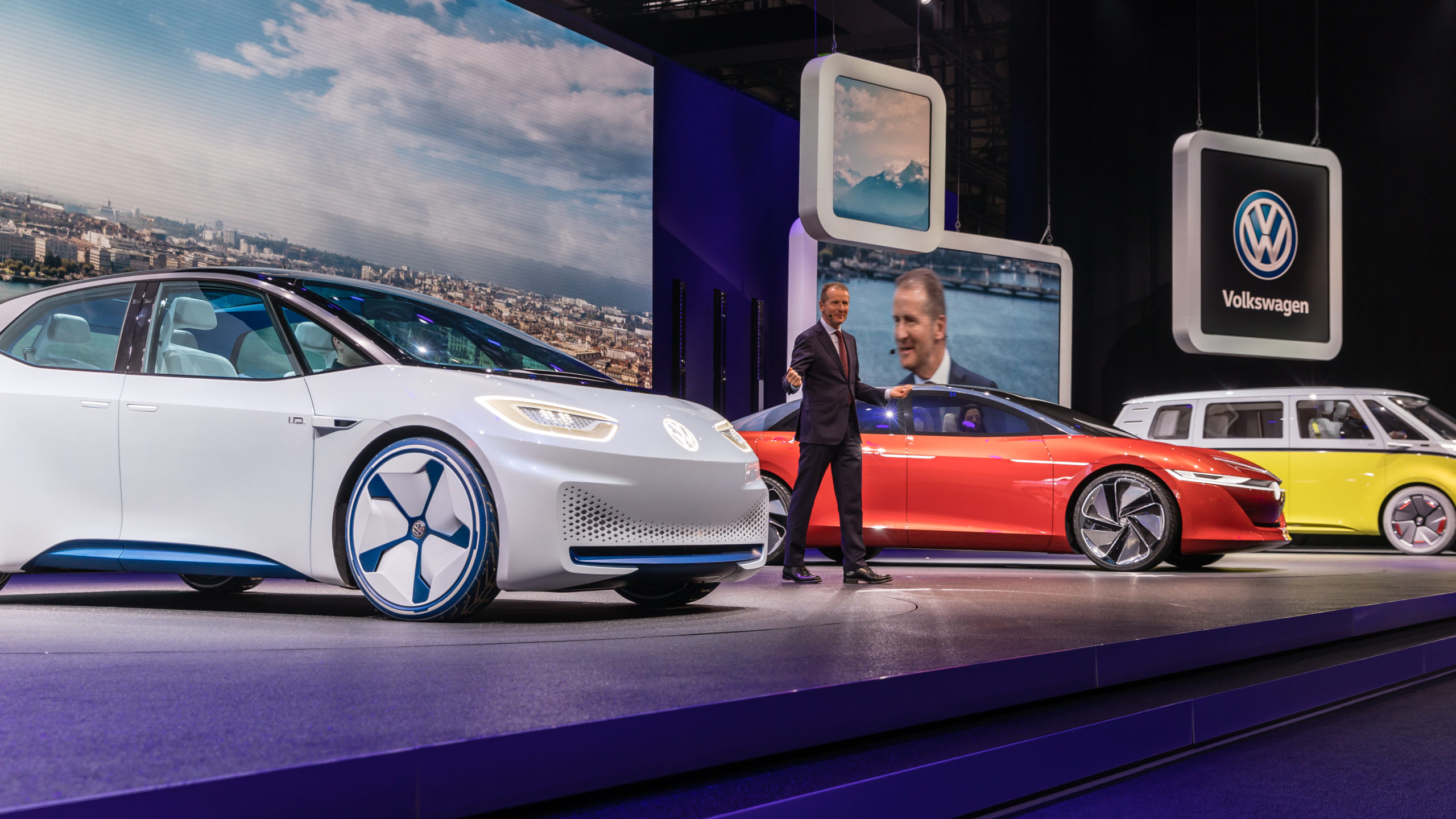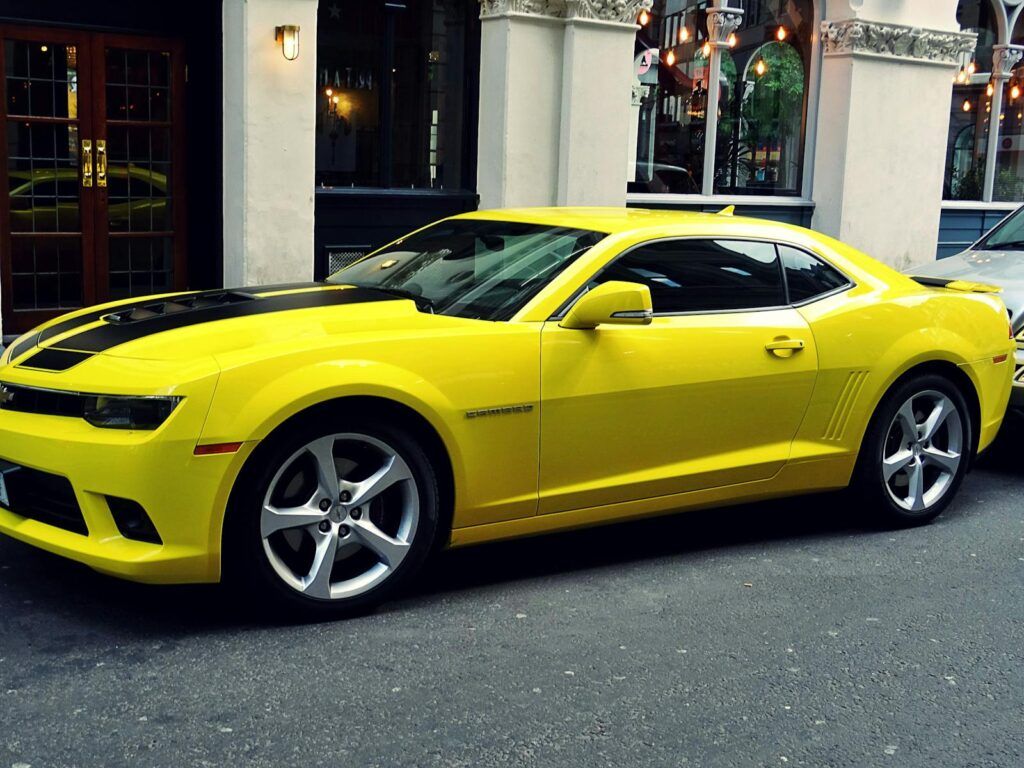
General Motors, an American multinational automotive manufacturing company headquartered in Detroit, Michigan, has a history as rich and complex as the vehicles it produces. For decades, it has stood as a titan of industry, continuously ranking as the largest automaker in the United States and holding the global top spot for 77 years before losing it to Toyota in 2008. Its journey, marked by ambitious acquisitions, groundbreaking innovations, significant challenges, and strategic shifts, offers a compelling narrative for anyone interested in the forces that have shaped modern transportation and industrial powerhouses.
Our aim in this in-depth analysis is to provide consumers with a thoroughly researched, objective overview of General Motors’ most pivotal moments. From its ambitious founding in the early 20th century to its transformative role in wartime production, and its often-controversial path in product development and safety, understanding these key historical junctures is essential. This objective review will illuminate the decisions and events that have not only defined GM but also left an indelible mark on consumer experience and the broader automotive landscape.
As we delve into the intricate tapestry of General Motors’ past, we will explore crucial periods that highlight its engineering prowess, strategic acumen, and at times, its profound missteps. This first section will cover the formative years, revealing how the company’s initial structure and early innovations laid the groundwork for its dominance, alongside a candid look at some of its more controversial contributions and significant labor challenges. Each point will offer detailed insights, empowering readers with a deeper understanding of this automotive giant’s foundational legacy.

1. **Founding Vision and Early Acquisitions**The story of General Motors begins with a bold vision from William C. Durant, the largest seller of horse-drawn vehicles at the time through his Durant-Dort Carriage Company. Despite being averse to automobiles initially, Durant acquired Buick Motor Company in 1904, setting the stage for a new automotive empire. He then formed the General Motors Company in 1908 as a holding company, borrowing a naming convention from General Electric, to consolidate a burgeoning industry.
GM’s early years were characterized by a rapid and aggressive acquisition strategy. Following Buick, Durant quickly brought Olds Motor Works into the fold on November 12, 1908. This was swiftly followed in 1909 by Cadillac, Elmore, Welch, Cartercar, Oakland (which would become the predecessor of Pontiac), the Rapid Motor Vehicle Company of Pontiac, Michigan, and the Reliance Motor Car Company of Detroit, Michigan, the latter two being predecessors of GMC.
Durant’s ambitions were vast; he even attempted to acquire Ford Motor Company in 1909 for $8 million, a move that was ultimately thwarted when banks refused to lend him the initial $2 million down payment. This aggressive, rapid expansion, while establishing GM’s formidable initial footprint, also led to significant financial strain. Durant’s over-leveraging of GM in these acquisitions resulted in his removal by the board of directors in 1910, at the behest of the bankers who had provided the crucial loans to keep the company afloat, an event partially influenced by the Panic of 1910–1911.
This early period established a pattern of ambitious growth and strategic consolidation that would define much of GM’s future. It showcased a company born from a desire to integrate diverse automotive ventures under a single powerful umbrella, demonstrating both the potential and the perils of rapid corporate expansion in a nascent industry.
Read more about: Jeff Bezos’s $80 Million Manhattan Coup: Unpacking a Record-Breaking Urban Investment
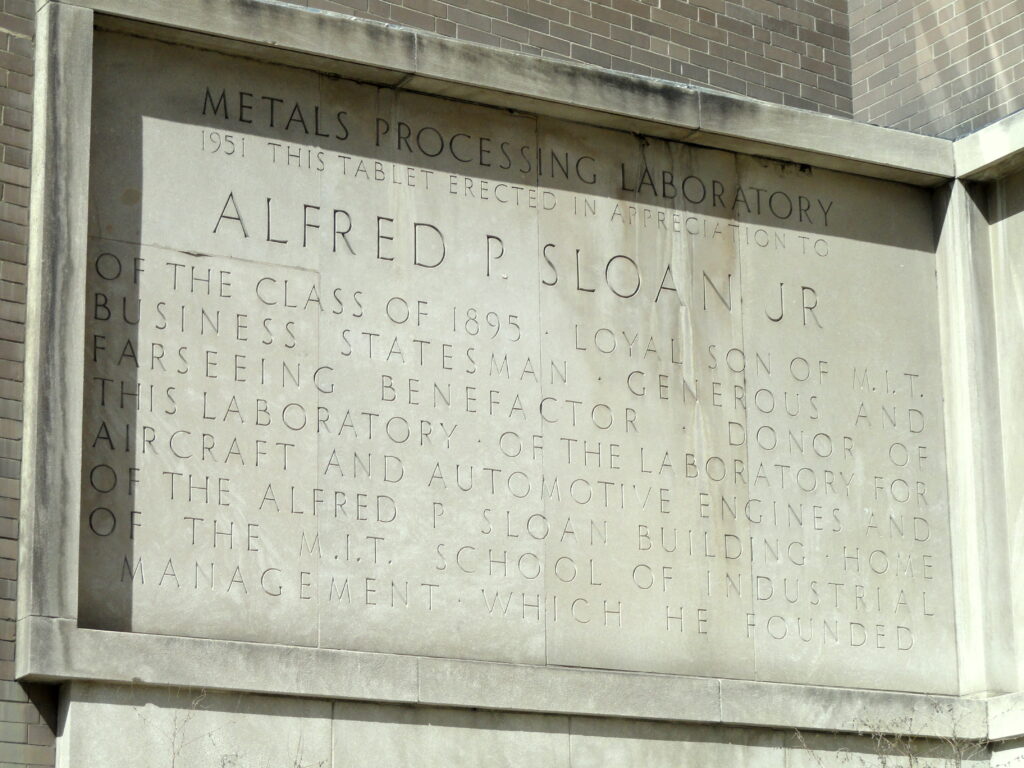
2. **Sloan’s Strategic Innovations**Following William C. Durant’s second removal from leadership in 1920, Alfred P. Sloan Jr. stepped into the role of orchestrating General Motors’ competitive strategy. This was a critical period where GM was intensely competing with Ford Motor Company, which at the time dominated the market with its standardized, affordable Model T. Sloan’s leadership ushered in an era of sophisticated corporate strategy that fundamentally changed how automobiles were marketed and sold.
Sloan introduced the revolutionary concept of annual model changes, a practice that is still common in the automotive industry today. His ingenious idea was to make previous years’ models “dated,” thereby encouraging consumers to desire the latest versions and creating a vibrant market for used cars. This deliberate obsolescence, coupled with continuous aesthetic and minor technological updates, ensured a constant demand cycle that kept consumers engaged and returning to showrooms, distinguishing GM’s offerings from Ford’s more static model.
Beyond styling, Sloan also implemented a tiered pricing strategy that positioned GM’s various brands to cater to different segments of the market. This strategy organized Chevrolet, Pontiac, Oldsmobile, Buick, and Cadillac, pricing them from least expensive to most expensive, respectively. This carefully crafted hierarchy allowed GM to appeal to a broad spectrum of consumers, from first-time buyers seeking affordability to affluent individuals desiring luxury, all while keeping them within the General Motors family as their incomes and preferences evolved.
This multi-brand, multi-price-point strategy was a masterstroke, allowing GM to achieve unprecedented market penetration and build enduring brand loyalty across different demographics. It moved the automotive industry beyond mere utility, establishing the car as a symbol of status and personal expression, thereby profoundly shaping consumer choices and setting a benchmark for competitive strategy that would be emulated for decades.
Car Model Information: 2020 Cadillac Escalade Premium Luxury
Caption: 1925 Ford Model T Touring Car
Manufacturer: Ford Motor Company
Production: October 1908 – May 1927
Assembly: collapsible list
Designer: Childe Harold Wills
Class: Economy car
BodyStyle: collapsible list
Layout: FMR layout
Engine: straight-4
Transmission: planetary gear
Wheelbase: 100.0 in
Abbr: on (1912 roadster)
Length: 134 in
Width: 1676 mm
Height: 1860 mm
Weight: convert
Predecessor: Ford Model N
Successor: Ford Model A (1927–1931)
Categories: 1900s cars, 1908 establishments in the United States, 1910s cars, 1920s cars, All articles needing additional references
Summary: The Ford Model T is an automobile that was produced by the Ford Motor Company from October 1, 1908, to May 26, 1927. It is generally regarded as the first mass-affordable automobile, which made car travel available to middle-class Americans. The relatively low price was partly the result of Ford’s efficient fabrication, including assembly line production instead of individual handcrafting. The savings from mass production allowed the price to decline from $780 in 1910 (equivalent to $26,322 in 2024) to $290 in 1924 ($5,321 in 2024 dollars). It was mainly designed by three engineers, Joseph A. Galamb (the main engineer), Eugene Farkas, and Childe Harold Wills. The Model T was colloquially known as the “Tin Lizzie”.
The Ford Model T was named the most influential car of the 20th century in the 1999 Car of the Century competition, ahead of the BMC Mini, Citroën DS, and Volkswagen Beetle. Ford’s Model T was successful not only because it provided inexpensive transportation on a massive scale, but also because the car signified innovation for the rising middle class and became a powerful symbol of the United States’ age of modernization. With over 15 million sold, it was the most sold car in history before being surpassed by the Volkswagen Beetle in 1972.
Get more information about: Ford Model T
Buying a high-performing used car >>>
Brand: Ford Model: Model T
Price: $36,998 Mileage: 111,633 mi.
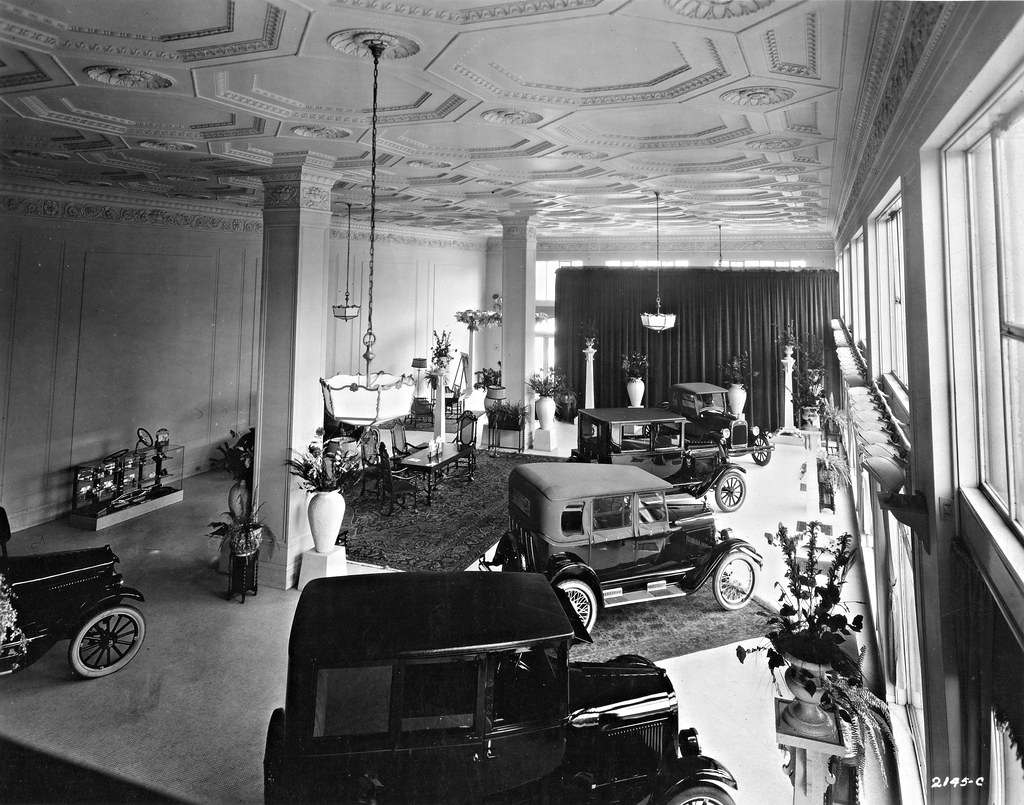
3. **The Dark Side of Innovation: Leaded Gasoline and CFCs**General Motors’ history includes groundbreaking innovations that unfortunately carried significant unforeseen or initially downplayed consequences for public health and the environment. A notable instance involves Thomas Midgley Jr., an engineer for GM, who in 1921 discovered tetraethyllead (leaded gasoline) as an antiknock agent. This discovery was pivotal because, unlike ethanol, the compound could be patented by GM. The introduction of leaded gasoline enabled the development of higher compression engines, which in turn delivered more power and improved efficiency, a significant leap in automotive performance at the time.
However, the long-term ramifications of this innovation were devastating. The public gradually realized that the lead contained in the gasoline was harmful to various biological organisms, including humans, causing widespread health issues. Disturbingly, evidence suggests that corporate executives understood the health implications of tetraethyllead from the beginning, highlighting a troubling aspect of industrial development where profits may have overshadowed public well-being.
Adding to this legacy, Midgley also played a key role in developing chlorofluorocarbons (CFCs), another innovative chemical compound with dire environmental repercussions. While initially hailed for their uses in refrigeration and aerosol propellants, CFCs were later discovered to contribute significantly to ozone depletion in the upper atmosphere. This detrimental impact led to their eventual banning worldwide, underscoring another instance where a groundbreaking chemical innovation, developed by a GM engineer, ultimately necessitated global remedial action due to severe environmental harm.
These two examples serve as a potent reminder of the complex interplay between industrial innovation, corporate responsibility, and public welfare. They illustrate how technological advancements, while offering immediate benefits, can incur substantial long-term costs when potential risks are not thoroughly assessed or are actively suppressed. For consumers, this historical context emphasizes the critical importance of rigorous testing, transparency, and ethical considerations in the development of new products and technologies.
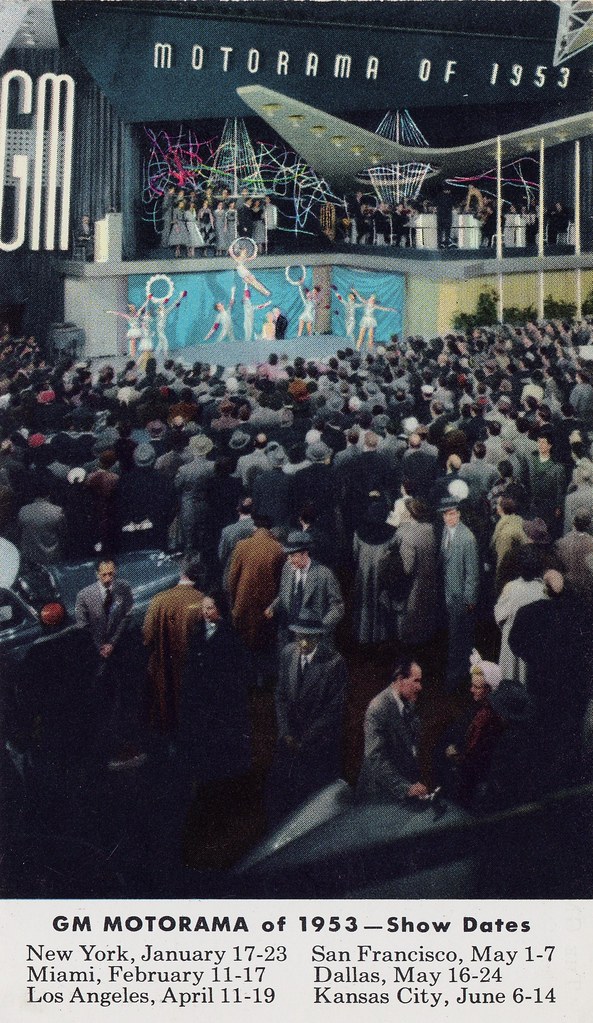
4. **Labor Relations and the Flint Sit-Down Strike**The 1930s marked a pivotal era for labor relations in the United States, and General Motors was at the epicenter of one of the most significant industrial actions: the Flint Sit-Down Strike. In 1935, GM’s labor force participated in the formation of the United Auto Workers (UAW) labor union, signaling a growing desire among workers for better wages, working conditions, and recognition of their collective bargaining rights. This movement culminated in the historic Flint Sit-Down Strike, which began in December 1936.
The strike initially idled two key plants in Flint, Michigan, but quickly spread to six other GM facilities, including those in Janesville, Wisconsin, and Fort Wayne, Indiana. Unlike traditional strikes where workers picketed outside, the sit-down strike involved workers occupying the plants, effectively preventing the company from bringing in strikebreakers or resuming production. This tactic was highly effective, exerting immense pressure on GM to negotiate.
During the strike, tensions flared, particularly in Flint where police attempted to enter the occupied plant to arrest strikers, leading to violence. In other cities, however, plants were shuttered peacefully, demonstrating the varied approaches to this new form of labor protest. The determination of the workers, who endured harsh winter conditions and prolonged separation from their families, eventually brought GM to the negotiating table.
The strike was finally resolved on February 11, 1937, with a landmark agreement. General Motors recognized the UAW as the exclusive bargaining representative for its workers, a monumental victory for the union movement. Furthermore, workers were granted a 5% raise and, notably, permission to speak in the lunchroom, a seemingly small concession that symbolized a significant shift in worker dignity and rights. This event not only cemented the UAW’s position as a major force in American industry but also set a precedent for labor negotiations across the nation, showcasing the power of organized labor in challenging corporate authority.
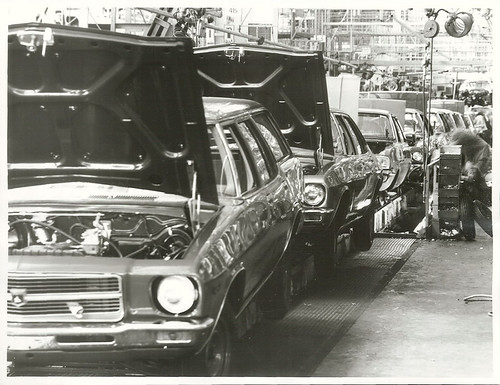
5. **Wartime Production and Controversial Leadership**General Motors played an indispensable role during World War II, transforming its vast manufacturing capabilities to support the Allied war effort. By 1940, William S. Knudsen, then GM president, served as head of U.S. wartime production for President Franklin Roosevelt, highlighting the critical importance of GM’s industrial might. By 1942, all of GM’s production had been redirected to support the war, churning out immense quantities of armaments, vehicles, and aircraft.
Examples of GM’s wartime contributions were significant and diverse. Its Vauxhall Motors division, based in the UK, manufactured the Churchill tank series, which proved instrumental in the North African campaign. In the United States, GM established the Eastern Aircraft Division, utilizing five plants to assemble Grumman-designed aircraft for the allied navies. These efforts showcased GM’s adaptability and scale in times of national crisis, firmly embedding its legacy in the broader narrative of Allied victory.
However, this period also reveals a more controversial side of GM’s history. Its Opel division, based in Germany, supplied the Wehrmacht with vehicles such as the Opel Blitz, reflecting the complex realities of international corporate operations during global conflict. Compounding this, Alfred P. Sloan, as head of GM at the time, was an ardent opponent of the New Deal, which bolstered labor unions and public transport, and notably, Sloan admired and supported Adolf Hitler.
Adding to the controversy, Nazi armaments chief Albert Speer allegedly stated in 1977 that Hitler “would never have considered invading Poland” without synthetic fuel technology provided by General Motors. Furthermore, GM was compensated $32 million by the U.S. government for its German factories that were bombed by U.S. forces during the war, raising questions about corporate loyalties and wartime responsibilities. These historical details offer a stark reminder that even during periods of immense national unity, the ethical complexities of corporate actions and leadership beliefs can cast a long shadow.
Read more about: Sinking 12000 Miles: The WW2 Aircraft Carrier That Somehow Survived
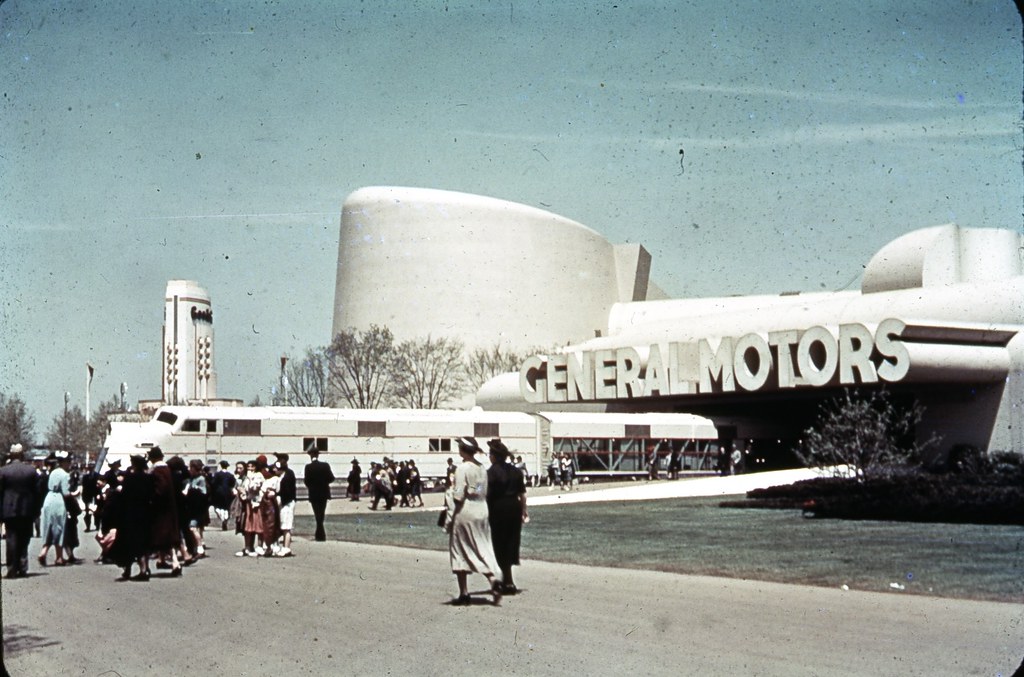
6. **Pioneering Safety: Airbags and ABS**While General Motors’ history includes controversial product developments, it also features significant contributions to automotive safety that have undoubtedly saved countless lives. In 1972, GM introduced a groundbreaking innovation by producing the first rear wheel anti-lock braking system (ABS) for two of its models: the Toronado and the Eldorado. This technology was a major step forward, enhancing vehicle control during emergency braking by preventing wheel lock-up, thereby improving steering capability and reducing stopping distances. For consumers, this meant a tangible increase in safety and confidence behind the wheel.
The commitment to safety continued into the following year. In 1973, the Oldsmobile Toronado made history again by becoming the first retail car sold with a passenger airbag. This pioneering feature introduced a crucial passive safety system designed to protect occupants in a collision, well before airbags became standard equipment across the industry. The introduction of passenger airbags marked a significant shift in thinking, moving beyond structural integrity to active occupant protection during an impact, demonstrating GM’s early recognition of the need for advanced safety measures.
Further reinforcing its commitment to environmental responsibility alongside safety, GM installed its first catalytic converters in its 1975 models. These devices were designed to reduce harmful pollutants in exhaust emissions, addressing growing concerns about air quality and paving the way for cleaner automotive technologies. The rapid adoption of this technology underscored an industry-wide push, led by major manufacturers like GM, to mitigate the environmental impact of vehicles.
These early innovations in ABS, airbags, and catalytic converters highlight General Motors’ role as a pioneer in developing and implementing technologies that significantly improved both vehicle safety and environmental performance. These advancements not only set new standards for the automotive industry but also profoundly influenced consumer expectations regarding what constitutes a safe and environmentally conscious vehicle, ultimately contributing to a safer and healthier driving experience for everyone.
Car Model Information: 2020 Cadillac Escalade Premium Luxury
Name: Oldsmobile Toronado
Caption: 1966 Toronado
Manufacturer: Oldsmobile
Production: 1965–1992
ModelYears: 1966–1992
Class: Full-size,personal luxury car
BodyStyle: coupe
Platform: GM E platform
Layout: FF layout
Related: Cadillac Eldorado,Buick Riviera
Categories: 1960s cars, 1970s cars, 1980s cars, 1990s cars, All Wikipedia articles written in American English
Summary: The Oldsmobile Toronado is a personal luxury car manufactured and marketed by the Oldsmobile division of General Motors from 1966 to 1992 over four generations. The Toronado was noted for its transaxle version of GM’s Turbo-Hydramatic transmission, making it the first U.S.-produced front-wheel drive automobile since the demise of the Cord 810/812 in 1937.
The Toronado used the GM E platform introduced by the rear-wheel drive Buick Riviera in 1963 and adopted for the front-wheel drive 1967 Cadillac Eldorado. The three models shared the E platform for most of the Toronado’s 26-year history.
Get more information about: Oldsmobile Toronado
Buying a high-performing used car >>>
Brand: General Motors Model: Toronado
Price: $36,998 Mileage: 111,633 mi.
Read more about: Unpacking Excellence: The Definitive Guide to 2025’s Most Coveted Luxury SUVs and Their Unrivaled Safety Innovations
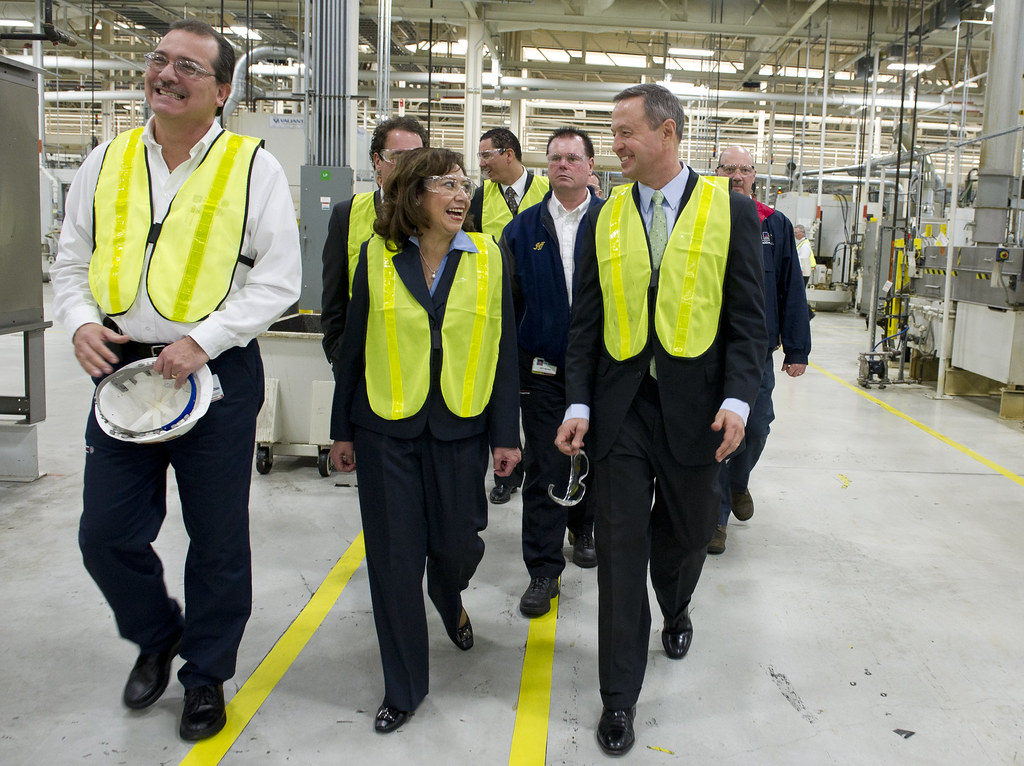
7. **Navigating Diversification and Early Electric Vehicle Ventures**Following a period of innovation in safety, the late 20th century saw General Motors embark on ambitious diversification efforts, aiming to expand its revenue streams beyond traditional automotive manufacturing. A significant move came in 1984 with the acquisition of Electronic Data Systems (EDS) for $2.5 billion from Ross Perot. This was part of CEO Roger Smith’s vision to generate at least 10% of GM’s annual worldwide revenue from non-automotive sources. EDS was intended to manage GM’s bookkeeping, computerize factories, and integrate its complex computer systems.
Further expanding its financial services, GMAC formed GMAC Mortgage in 1985, acquiring Colonial Mortgage and the servicing arm of Norwest Mortgage. This acquisition included an $11 billion mortgage portfolio. The company also ventured into aerospace, acquiring Hughes Aircraft Company for $5 billion in 1985 and merging it into Delco Electronics. These moves aimed to insulate GM from the cyclical nature of the automotive industry.
In parallel, GM explored early electric vehicle technologies, exemplified by the Sunraycer in 1987, which won the World Solar Challenge. This led to the General Motors EV1 (Impact) concept at the 1990 LA Auto Show. The EV1 was the first zero-emissions car marketed in the US in over three decades. Produced for the 1996 model year, the EV1 was available only via lease in California and Arizona. However, GM ceased production in 1999–2002 and did not renew leases, citing profitability concerns. Most EV1s were returned and destroyed, a significant point of contention for EV advocates.
Read more about: The Future Is Code: 14 Transformative Automotive Apps Set to Dominate the Next Decade
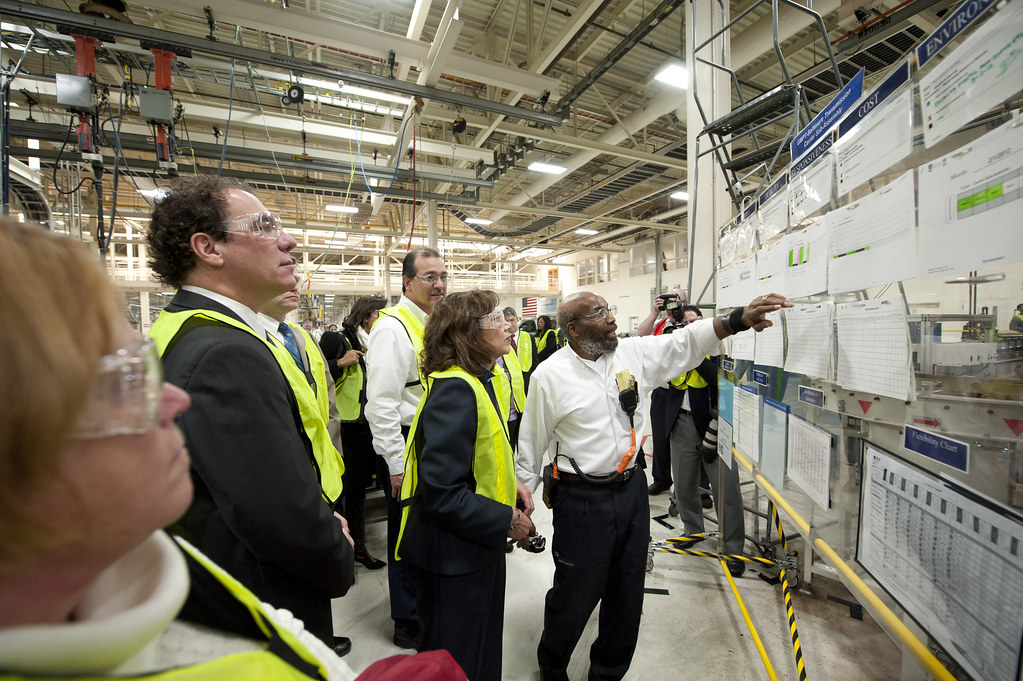
8. **Navigating Economic Headwinds and Early Brand Reshaping**The early 1990s presented General Motors with significant economic challenges, leading to substantial losses and reduced output. This prompted a strategic return to its core automotive business. In 1996, GM completed the corporate spin-off of Electronic Data Systems (EDS), reversing its major diversification. Further, GM sold the military businesses of Hughes Aircraft Company to Raytheon Company in 1997 for $9.5 billion.
As the new millennium approached, GM engaged in both collaborations and difficult brand decisions. In March 2000, GM acquired a 20% share of Fiat for $2.4 billion, but this contentious alliance led GM to pay $2 billion in 2005 to sever ties. A significant internal restructuring began with the decision to phase out Oldsmobile in December 2000, eventually discontinuing it in 2004. This was an early step to consolidate brands and streamline operations.
Amidst these changes, GM also made strides in hybrid technology. In May 2004, the company delivered the first full-sized pickup truck mild hybrid vehicles, the 1/2-ton Chevrolet Silverado/GMC Sierra. These early hybrids did not use electrical energy for propulsion as later designs would. Further initiatives included a diesel-electric hybrid powertrain for transit buses and the Opel Astra diesel hybrid concept in January 2005.
Read more about: Seriously What Happened? From Classic Blends to Legal Battles: 8 Cigar Brands That Mysteriously Vanished from Local Tobacco Shops
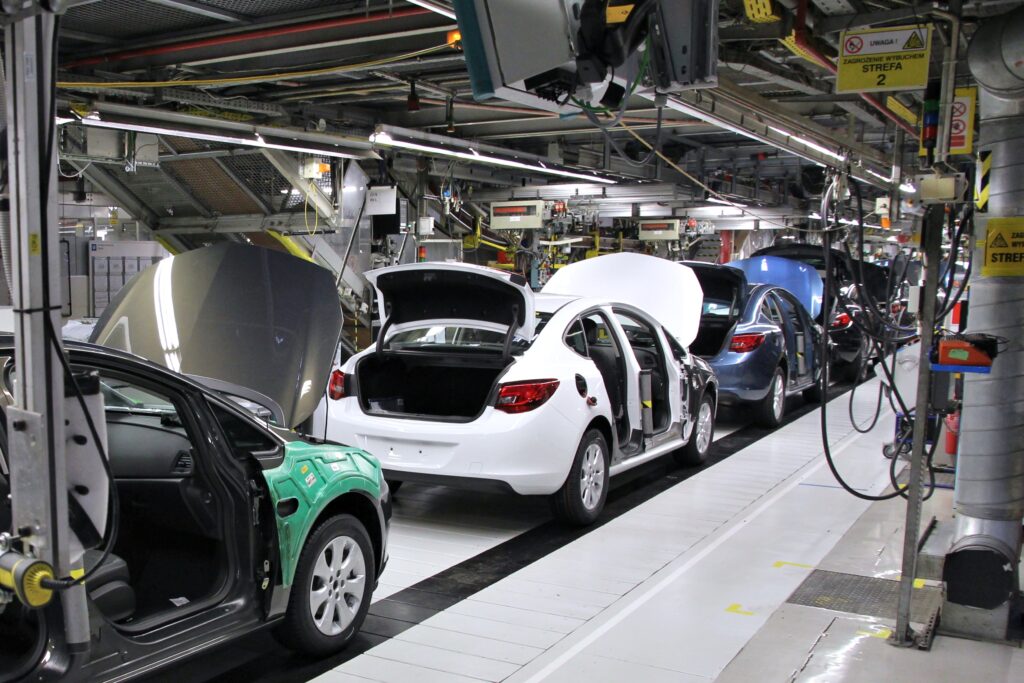
9. **The Unprecedented Chapter 11 Bankruptcy and Government Intervention**The year 2009 marked the most turbulent period in General Motors’ long history, culminating in an unprecedented government-backed Chapter 11 reorganization. Facing severe financial distress, partly exacerbated by the global financial crisis, GM had received $17.4 billion in bailouts from the U.S. government. In March 2009, President Barack Obama intervened, forcing the resignation of then-CEO Rick Wagoner, underscoring the gravity of the situation.
On June 8, 2009, General Motors formally filed for Chapter 11 bankruptcy. This momentous decision paved the way for a radical restructuring, where the original General Motors entity sold its viable assets and some subsidiaries to an entirely new company on July 10, 2009. The original company was renamed Motors Liquidation Company, effectively shedding many liabilities and allowing a “new GM” to emerge. This maneuver was designed to enable the company to restart operations on a leaner, more sustainable footing.
The government’s intervention, primarily through the Troubled Asset Relief Program (TARP), saw the United States Department of the Treasury invest $49.5 billion in General Motors. While the Treasury recovered $39 billion from stock sales, it resulted in a loss of $10.3 billion on this specific investment. However, an additional $17.2 billion invested into GMAC (now Ally Financial) yielded a profit of $2.4 billion. A study by the Center for Automotive Research indicated the bailout saved 1.2 million jobs and preserved $34.9 billion in tax revenue.
Read more about: Remember the ’00s? These 11 Unforgettable Influences Were the Decade’s True Princes!
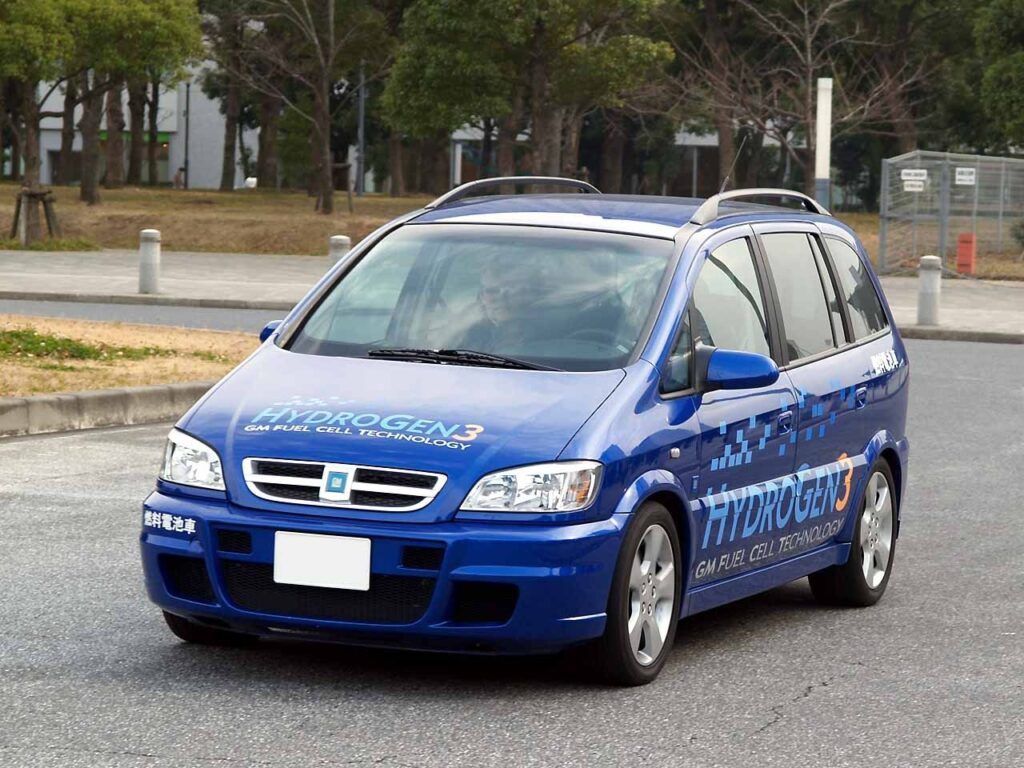
10. **Strategic Consolidation and Global Portfolio Adjustments Post-Bankruptcy**Emerging from bankruptcy in July 2009, General Motors immediately faced the mandate to shed its poorest-performing brands. This led to the discontinuation or divestiture of iconic names such as Hummer, Saab, Saturn, and Pontiac. Efforts to sell Hummer and Saturn failed, leading to their official shutdowns in 2010. Pontiac was also discontinued, with its last vehicle built in January 2010. While Saab was sold in 2010, it too declared bankruptcy in 2012. These decisions were crucial steps in GM’s post-bankruptcy restructuring.
The post-reorganization era also saw significant shifts in GM’s global operations, particularly in Asia. Facing cash flow issues with GM-Daewoo in Korea, GM sought capital from China. By late 2009, GM sold a 1% stake in Shanghai GM to SAIC Motor, granting SAIC controlling interest. GM also transformed its GM India division into a joint venture with SAIC Motor, securing access to Chinese banking sector funding.
In the midst of these realignments, GM introduced new vehicle concepts. The Chevrolet Volt, an extended-range electric vehicle (EREV), debuted in 2010, marking a significant step in GM’s renewed commitment to electric mobility. The company also explored urban mobility solutions like Project P.U.M.A. with Segway Inc. These initiatives, coupled with leadership changes, laid the groundwork for a more focused and technologically advanced General Motors.
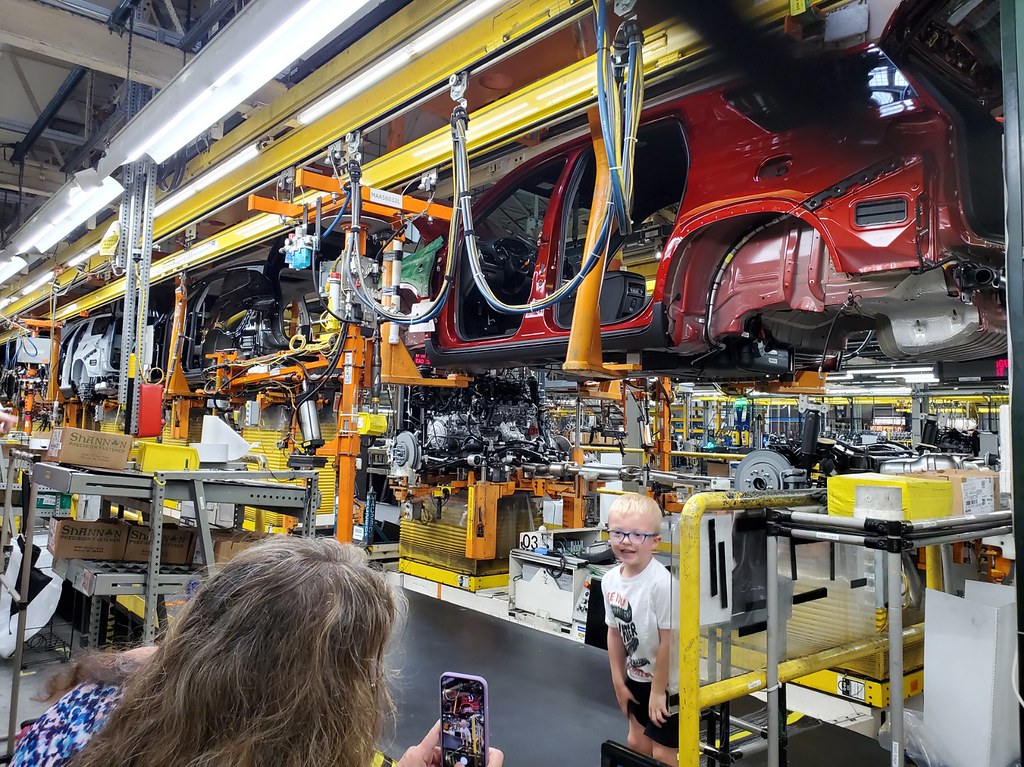
11. **Confronting Safety Crises and Embracing New Mobility Paradigms**A critical challenge emerged early in Mary Barra’s tenure as CEO, appointed in January 2014. Only three weeks later, General Motors announced a major recall due to faulty ignition switches, an issue linked to at least 124 deaths. The ensuing settlements were estimated to cost the company $1.5 billion. This crisis became a pivotal moment, forcing GM to confront past safety oversight and leading to a renewed emphasis on consumer safety.
Under Barra, GM abandoned many international markets, concentrating on higher-profit regions like North America and China. This included the sale of General Motors Europe (Opel and Vauxhall) to the French PSA Group in 2017 for US$2.2 billion, after 16 consecutive years of losses. Further, GM ceased vehicle sales in India in 2017 and exited major right-hand drive markets such as Thailand, Australia, and New Zealand in 2020.
Simultaneously, GM aggressively moved into future mobility solutions. In 2016, it invested $500 million in ridesharing company Lyft. More significantly, GM acquired Cruise, a San Francisco self-driving vehicle start-up, in March 2016 to develop self-driving cars. While Cruise faced subsequent challenges, these investments underscored GM’s commitment to autonomous technology. By March 2025, Super Cruise had achieved SAE Level 2 autonomy. In a landmark move for electric vehicles, GM began production of the Chevrolet Bolt EV in October 2016, the first mass-market all-electric car with a range over 200 miles.
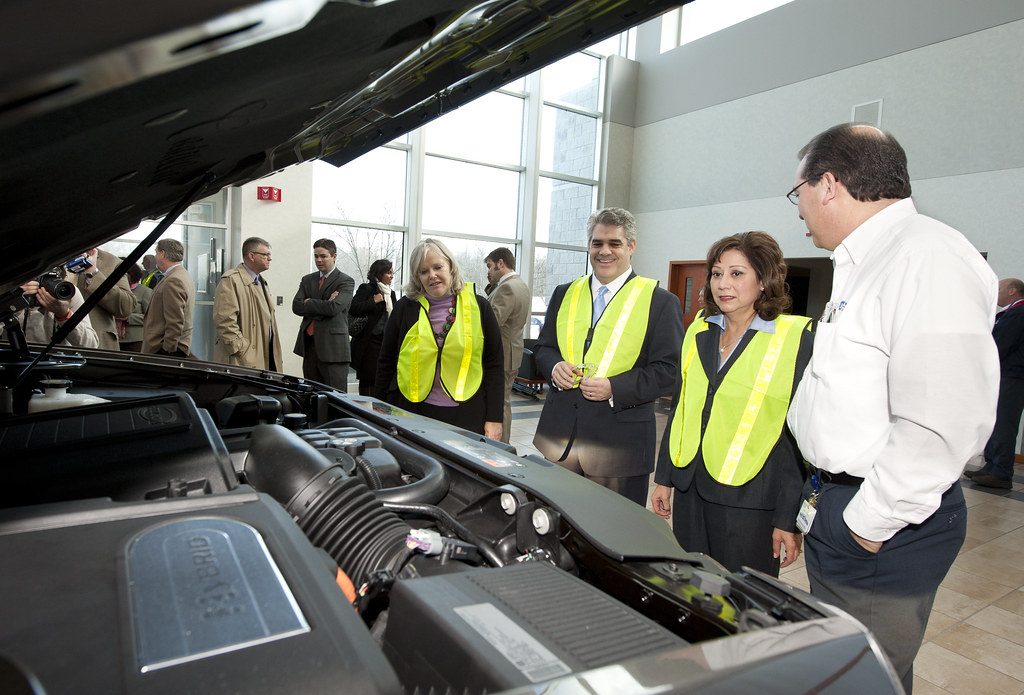
12. **Charting a Course for an Electric and Carbon-Neutral Future**The early 2020s solidified General Motors’ ambitious trajectory toward an electrified and carbon-neutral future. In January 2021, the company unveiled a new logo alongside the tagline “EVerybody in,” explicitly signaling its invigorated commitment to electric vehicles. The capitalized “EV” within the logo and its design, which subtly incorporated an electric plug, reinforced this new direction. GM launched BrightDrop, a new brand for all-electric commercial vehicles, at the January 2021 Consumer Electronics Show.
On January 28, 2021, GM announced its boldest environmental pledge: to end fossil-fuel vehicle production by 2035 and achieve carbon neutrality by 2040. However, these plans were scaled back in 2025 due to a lack of customer demand. To support its EV ecosystem, GM announced plans in 2021 to establish an automotive battery and battery pack laboratory in Michigan, taking responsibility for key battery components. A long-term supply agreement with LG Chem Ltd. for over 500,000 tons of cathode materials underscores GM’s strategic efforts to control its EV supply chain.
While initial aggressive goals for EV deliveries were scaled back, leading to the reintroduction of plug-in hybrid electric vehicles (PHEVs) in January 2024, GM continues to invest heavily in the future. The company increased its commitment to Lithium Americas to $945 million in October 2024, establishing a joint venture for the Thacker Pass lithium mine in Nevada, crucial for securing a domestic supply of critical battery materials. In a final notable development, GM announced on April 15, 2024, that it would relocate its global headquarters to the Hudson’s Detroit development in 2025, symbolizing a new chapter within its hometown.
**Conclusion: A Legacy Forged in Resilience and Reinvention**
General Motors’ journey through its era of turmoil, transformative restructuring, and ambitious future plans paints a vivid picture of an automotive giant in constant evolution. From the depths of bankruptcy and the difficult shedding of beloved brands to confronting major safety crises and pivoting dramatically towards electric vehicles, GM has demonstrated an enduring capacity for resilience. The strategic decisions made in these challenging decades, often under intense public scrutiny, have fundamentally reshaped its identity.
Read more about: Toyota’s Hypothetical ‘Water Engine’: Unpacking Hydrogen’s Disruptive Potential and the Future of Mobility Beyond EVs
Today, as GM aggressively invests in electric vehicle technology, autonomous driving, and sustainable manufacturing, it is actively writing the next chapter of its storied history. The path has been complex, marked by both strategic brilliance and significant lessons learned, yet the overarching commitment to innovation and adapting to consumer needs remains. For discerning consumers, understanding this multifaceted history offers invaluable context to the vehicles and technologies GM produces today and the vision it holds for tomorrow’s mobility landscape, ensuring that informed choices are made not just about the present, but with an eye toward the future that this influential company is actively building.


